|
Written by Gabriel Vicovan Special thanks to Radu Răducu, Enciu Ana, and Vicovan Adriana for their assistance. Historic The breed was formed at the Research and Development Institute for Sheep and Goats Breeding Palas – Constanța between 1975 and 1987. They were developed by crossing East Friesian (imported from Germany) and Awassi (imported from Israel) breeds with the Merino de Palas breed, followed by isolation reproductive and selection to increase milk production. The breed was homologated in 2010. Currently, the Milk Breed Palas has in the genome 65% genes from two of the best milk breeds in the world – East Friesian and Awassi, with 27% of genes from Palas Merino breed raised in Dobrogea, and 8% genes from other breeds of minor importance. Breeding area In Dobrogea, at the Research and Development Institute for Sheep and Goats Breeding Palas – Constanța, there are 1,000 sheep, with 200 rams produced annually, to improve milk production in ewes farms located in the Dobrogea area. Conservation program The only genetic fund of the breed is found at the Research and Development Institute for Sheep and Goats Breeding Palas – Constanța. The population is structured in 12 ram families in the breeding season, proceeding the rotational mating between families. External (morphological) characteristics
The conformation is specific to dairy sheep. A long head with a convex profile is more pronounced in males. They are hornless, the ears are large, covered with short, thick white hairs, and are carried laterally with a tail well attached to the trunk. The chest is long and deep with a small sternum prominent, while the trunk is elongated, has a trapezoidal shape, and the spine is rectilinear. The croup is relatively broad, long, and straight; the tail is thin and long, covered with white, thick short hairs. The udder is well attached, has a globular shape, is sparsely haired, with long nipples, suitably thick, directed sideways and downwards. The body dimensions
Production characteristics
Reproductive characters Fecundity 92-97%; Prolificacy 117-128%
9 Comments
The Annual Dairy Sheep and Goat Conference has world class lectures on aspects of Dairy Sheep and Dairy Goat production and medicine, aimed at all small ruminant farmers, vets, advisors, nutritionists and suppliers. A combination of quality science and practical information given to an audience of farmers and vets.
The international goat conference that took place in Kouty from November 9th to 10th, 2018, included visitors from Poland and the Slovak Republic.
The New Zealand (NZ) dairy goat industry is just a blip on the international market for the amount of milk produced. Asia produces over 217,000 tons times more milk than Oceania (Faostat 2013).
However, the NZ dairy goat industry has become more prominent on the international market in the last five years and is presently the most developed of the NZ goat industries compared to the meat and fiber goat industries. The present domestic market is small and mainly consists of cheeses, yogurt, UHT, whole milk, milk powder and ice cream sold at local farmers markets and supermarkets. There may be future growth in the domestic markets with the changing palate of New Zealanders. Dear researchers, colleagues, and stakeholders in animal production- veterinary medicine, agriculture, environment, and economic.
The first Asia-Australasian Dairy Goat Conference was held on April 9th-12th, 2012 in Kuala Lumpur, Malaysia by FAO joined with the University Putra Malaysia (UPM), Department of Veterinary Science, Malaysia and the International Dairy Federation (IDF). That provided a platform to share technical information and experiences and to network for the promotion of dairy goat farming. Following the success of the Third one, the Fourth AADGC will be held at Tra Vinh University, Vietnam on October 17th-19th, 2018. The theme of this conference is Strengthening Development of Dairy Goat Production Adapting to Climate Change. 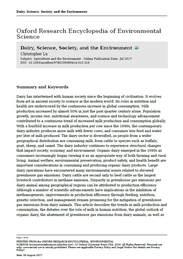 Dairy has intertwined with human society since the beginning of civilization. It evolves from art in ancient society to science in the modern world. Its roles in nutrition and health are underscored by the continuous increase in global consumption. Milk production increased by almost 50% in just the past quarter century alone. Population growth, income rise, nutritional awareness, and science and technology advancement contributed to a continuous trend of increased milk production and consumption globally. With a fourfold increase in milk production per cow since the 1940s, the contemporary dairy industry produces more milk with fewer cows, and consumes less feed and water per liter of milk produced. The dairy sector is diversified, as people from a wider geographical distribution are consuming milk, from cattle to species such as buffalo, goat, sheep, and camel. The dairy industry continues to experience structural changes that impact society, economy, and environment. Organic dairy emerged in the 1990s as consumers increasingly began viewing it as an appropriate way of both farming and rural living. Animal welfare, environmental preservation, product safety, and health benefit are important considerations in consuming and producing organic dairy products. Large dairy operations have encountered many environmental issues related to elevated greenhouse gas emissions. Dairy cattle are second only to beef cattle as the largest livestock contributors in methane emission. Disparity in greenhouse gas emissions per dairy animal among geographical regions can be attributed to production efficiency. Although a number of scientific advancements have implications in the inhibition of methanogenesis, improvements in production efficiency through feeding, nutrition, genetic selection, and management remain promising for the mitigation of greenhouse gas emissions from dairy animals. This article describes the trends in milk production and consumption, the debates over the role of milk in human nutrition, the global outlook of organic dairy, the abatement of greenhouse gas emissions from dairy animals, as well as scientific and technological developments in nutrition, genetics, reproduction, and management in the dairy sector. READ MORE... 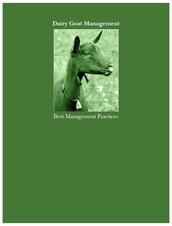 Compiled and written by Clara Hedrich, with assistance from Dr. Chris Duemler, DVM, and Dan Considine The main purpose of this “Best Practices Guide” is to provide some insight into the dairy goat industry.
To read or download the guide click here. Written by Francisco de Asis Ruiz Morales, IGA's Country Representative for Spain
Worldwide goat milk production has increased by 108.7% from 1988 to 2013, from 8,828,266 to 18,422,372 metric tons (FAOSTAT, 2013). Nevertheless, the goat is still exploited mainly for the production of meat, milk only being the principal product on the European continent. Escrito por Francisco de Asís Ruiz Morales, Representante de IGA para España
La producción de leche de cabra ha aumentado a nivel mundial un 108,7 % en el periodo de 1988 a 2013, pasando de 8.828.266 a 18.422.372 toneladas (FAOSTAT, 2013). A pesar de ello, el caprino se sigue explotando principalmente para la producción de carne, tan solo en el continente europeo es la leche el producto principal. Lea el artículo completo aquí. 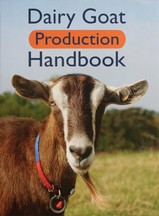 Download an order form Download an order form The First Edition of the Dairy Goat Production Handbook from Langston University has been published and is now available. The breadth and depth of topics and information included in this book will serve all dairy goat producers from those persons who raise and milk only a few does in their backyard to producers operating a large commercial dairy. Upon perusing the book, the reader will see that experts in all areas of production were invited to author chapters. Excellent pictures and charts accompany the narrative of each chapter. Production of safe, wholesome dairy goat milk and milk products is the aim of all dairy goat producers. The editors and authors hope that this handbook serves to assist in fulfilling that aim. |
IGA Blog
The International Goat Association promotes goat research and development for the benefit of humankind, to alleviate poverty, to promote prosperity and to improve the quality of life. Archives
May 2024
Categories
All
|
|
International Goat Association
2516 Millbrook Rd., Little Rock, AR72227 USA email: [email protected] -454-1641 |
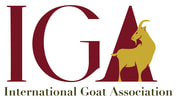
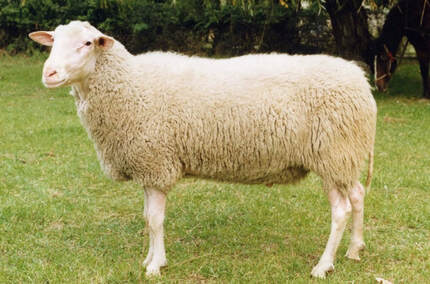
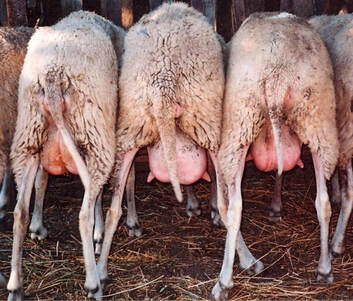

 RSS Feed
RSS Feed